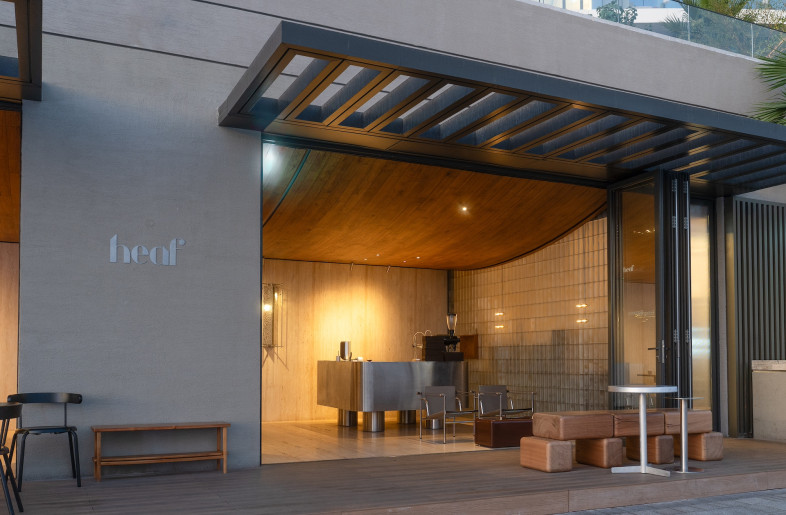Les Nettoyeurs White’s, a new eco-friendly dry-cleaning shop in Montreal’s Boucherville suburb, is a far cry from what most would expect of stores of yore (or even today). The space – modelled after traditional Parisian apartments – was designed by local architecture firm Ivy Studio, for clients looking to become a desirable brand around the city, at a time when demand for the service is waning. The only way to do so? ‘Raise the bar and distinguish oneself,’ according to Ivy Studio architect Philip Staszewski.
‘Many people would consider dry-cleaning a "luxury/necessity" business – the majority of people only use it when absolutely necessary – and only a few go regularly,’ Staszewski continued. ‘For that reason, most dry-cleaners in the city are not enjoyable places: often too crowded and messy, with average service.’
White’s is standing tall against precarious times for Canada’s dry-cleaning market, as it is projected to dip 1.4 per cent annually, reported textile organisation CINET. The popularity of casual wear and garments manufactured with synthetic fibres, as well as the increase in at-home cleaning products available for purchase, are all to blame. But CINET also credits some success factors dry-cleaners can meet to stay above water: adhering to modern environmental standards, the readiness to adapt new technologies and gaining access to niche markets. White’s meets all three; the new space certainly helps accomplish the third mark.




Most dry-cleaners in the city are not enjoyable places
From the beginning, Ivy Studio’s clients – this being their first White’s flagship – put emphasis on quality and attention to detail. Materials like black marble and brass, intricate moulding details and globular lighting fixtures come together in the elegant interiors, which may, for first-time visitors, instil doubt in their minds that they’re in the right place at all – until they spot the conveyor. Cleaning products are transparently displayed in a 4.3-m built-in ‘library,’ complete with a custom sliding ladder. Its design is to be expected from the Parisian apartments they reference, but certainly not from a suburban dry cleaners. Yet that’s a welcome surprise – one that is likely to resonate with design-sensitive customers and create an uptick in demand.
‘The idea wasn’t to get people to stay there longer, but to feel welcome, as if in a friend's home,’ explained Staszewski. ‘We wanted people to feel comfortable asking questions about the products or about work done by the seamstress. We see it as a hotel's lobby – though you often spend very little time there, you should feel comfortable.’










